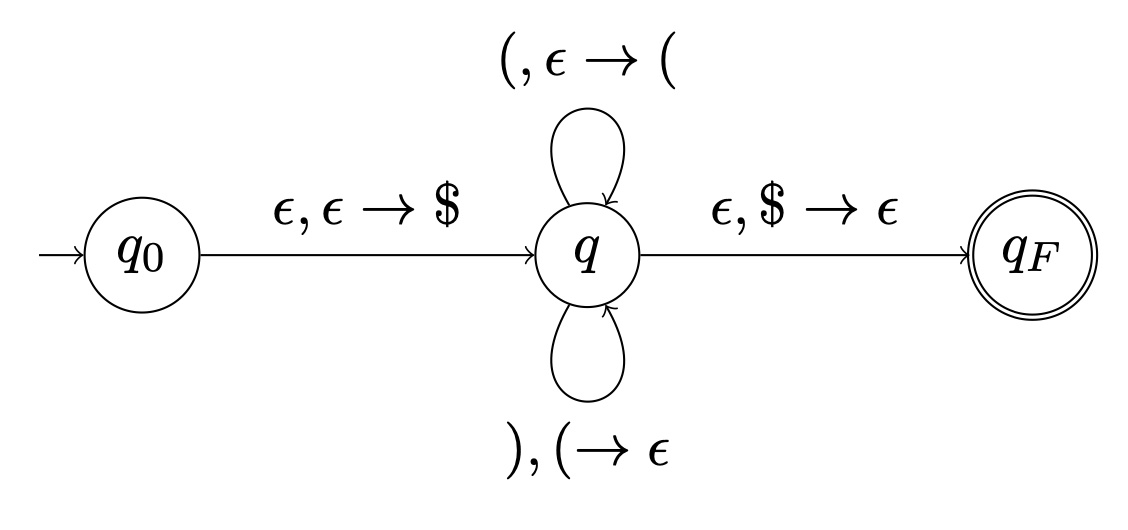Using the alphabet Σ = {a, b}, consider the language L of strings with the same number of a's and b's.
- Is language L regular? Either give a DFA that accepts this language, or prove that no such DFA exists.
- Describe a pushdown automaton that accepts exactly those strongs in the language L, or explain why such a PDA cannot exist.
Consider the problem of checking whether an expression has balanced parentheses. For example, (())() is balanced, but ())()), ((), and ())(() are not. (In the last case, there are the same number of left and right parentheses, but the second right parenthesis appears before the a corresponding left parenthesis appears—that is, the left and right parentheses appear in the wrong order to balance.)
The following diagram is a proposed to accepted expressions with matching parentheses:

- Does the proposed PDF accept strings with balanced parentheses or not? Explain.
-
Write a state diagram for a PDA over the alphabet Σ = {
{, }, <, >, (, ) } , which accepts exactly those
strings where parentheses match and are properly nested,
For example, the string ({<>}) is properly matched, but neither ({><}) nor ({<)}>) are.